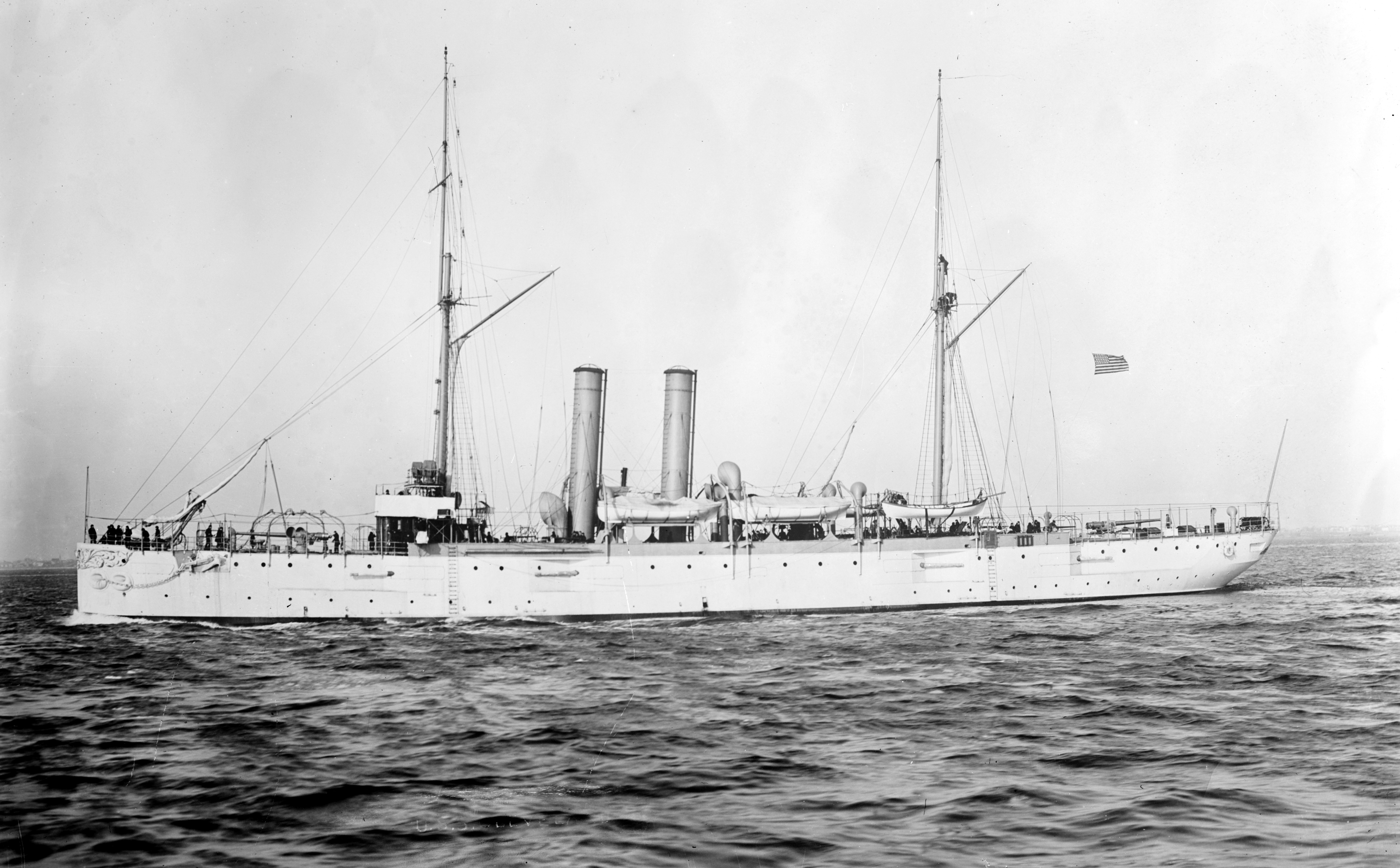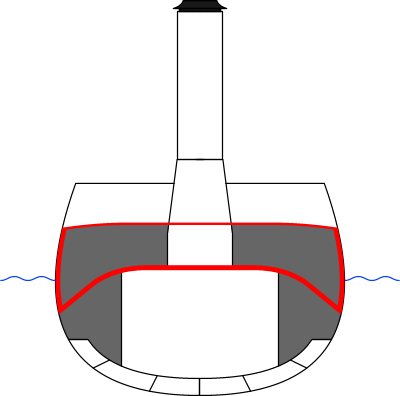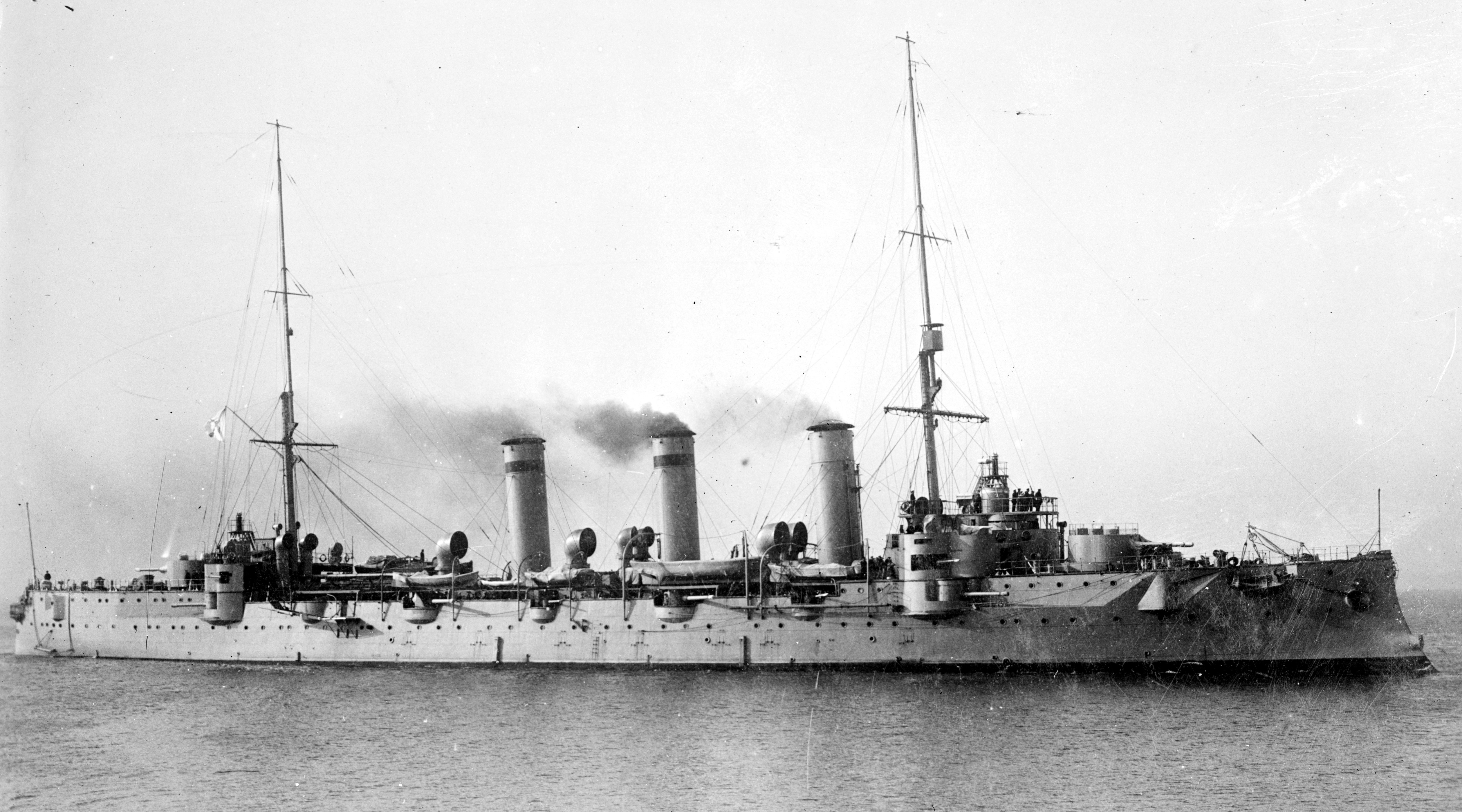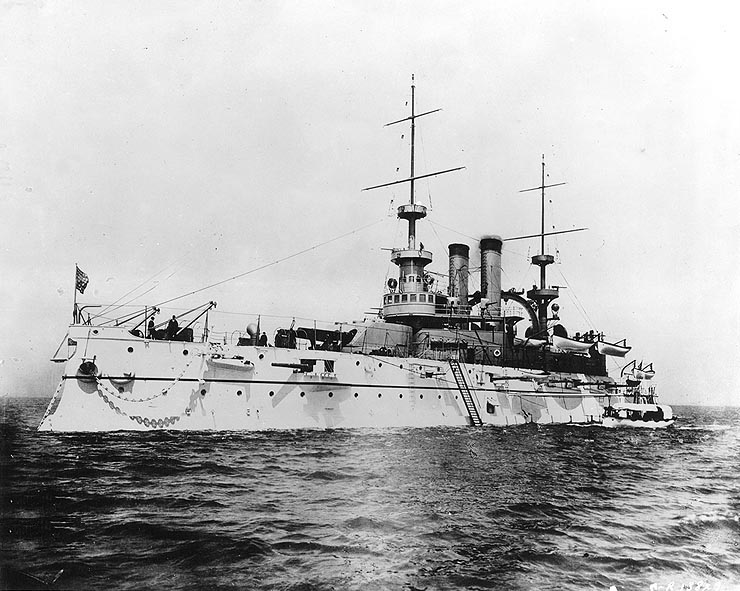|
George Washington Williams (naval Officer)
George Washington Williams (Yorkville, South Carolina, 30 July 1869 – Charleston, South Carolina, 18 July 1925) was a U.S. Navy rear admiral. Navy career Williams graduated from the United States Naval Academy in 1890. He served the required two years of sea duty in ''Pensacola'', before he was commissioned an ensign on 1 July 1892. Late 19th century/early 20th century assignments Williams served in a succession of sea and shore billets throughout the 19th century: the former in USS ''Essex'', ''Columbia'', ''Yankee'', ''Buffalo'', ''Panther'', ''Richmond'', and ''Monongahela''; the latter at the Naval Torpedo Station, Newport, Rhode Island. In addition, he served on the staff of the Commander in Chief, Asiatic Fleet, in 1899 and commanded the torpedo boat ''Bainbridge'' in 1903 before commanding the 1st Torpedo Boat Flotilla. Reporting to ''Wisconsin'' on 5 April 1905, Williams subsequently joined the protected cruiser ''Chicago'' for a tour of duty which included ... [...More Info...] [...Related Items...] OR: [Wikipedia] [Google] [Baidu] |
Yorkville, South Carolina
York is a city in and county seat of York County, South Carolina, United States. The population was approximately 6,985 at the 2000 census and up to 7,736 at the 2010 census. York is located approximately southwest of Charlotte, North Carolina and west of Rock Hill, South Carolina. History The first European settlers came to York in the early 1750s, having migrated south from Pennsylvania and Virginia. Of the three major groups settling Pennsylvania, the English came first, then the Germans, and then the Scots. The county names of Lancashire, Cheshire and Yorkshire had been brought from England to Pennsylvania, and then on to South Carolina by the early settlers. Prior to this, the first known inhabitants of York County were the Catawba Indians. The town of York was originally known as Fergus's Crossroads for a tavern, owned by two brothers, William and John Fergus, that was located at the intersection of the road from Rutherfordton to Camden and the road from Charlo ... [...More Info...] [...Related Items...] OR: [Wikipedia] [Google] [Baidu] |
USS Monongahela (1862)
USS ''Monongahela'' was a barkentine–rigged screw sloop-of-war that served in the Union Navy during the American Civil War. Her task was to participate in the Union blockade of the Confederate States of America. Post-war, she continued serving her country in various roles, such as that of a storeship and schoolship. Service history American Civil War ''Monongahela''—the first United States Navy ship to bear that name—was built by the Philadelphia Navy Yard and was launched on July 10, 1862; sponsored by Ms. Emily V. Hoover, daughter of Naval Constructor Hoover who superintended the ship's construction; and commissioned on January 15, 1863, Captain (naval), Captain James P. McKinstry in command. Initially assigned to the North Atlantic Squadron, ''Monongahela'' sailed instead to reinforce Rear admiral (United States), Rear Admiral David G. Farragut's West Gulf Blockading Squadron off Mobile, Alabama, remaining on duty off that port until ordered to attempt to run past Con ... [...More Info...] [...Related Items...] OR: [Wikipedia] [Google] [Baidu] |
USS Cleveland (C-19)
USS ''Cleveland'' (C-19/PG-33/CL-21) was a United States Navy ''Denver''-class protected cruiser. Construction She was launched 28 September 1901 by Bath Iron Works, Bath, Maine, sponsored by "Miss R. Hanna" (probably Ruth Hanna McCormick), and commissioned 2 November 1903, with Commander William Henry Hudson Southerland in command. Service history The ''Cleveland'' cruised with the European Squadron, in West Indies and Cuban waters, along the east coast between Hampton Roads and Boston, and on a midshipmen training cruise until 17 May 1907. She then sailed from New York via Gibraltar, Port Said, Aden, Colombo and Singapore to Cavite, arriving 1 August 1907. After three years on the Asiatic station, the ''Cleveland'' returned to Mare Island Navy Yard 1 August 1910. Decommissioned 3 August 1910, she was placed in second reserve 8 April 1912, and returned to full commission 31 August 1912. The ''Cleveland'' alternated patrols in waters off Mexico and Central America with r ... [...More Info...] [...Related Items...] OR: [Wikipedia] [Google] [Baidu] |
Cruiser
A cruiser is a type of warship. Modern cruisers are generally the largest ships in a fleet after aircraft carriers and amphibious assault ships, and can usually perform several roles. The term "cruiser", which has been in use for several hundred years, has changed its meaning over time. During the Age of Sail, the term ''cruising'' referred to certain kinds of missions—independent scouting, commerce protection, or raiding—fulfilled by frigates or sloops-of-war, which functioned as the ''cruising warships'' of a fleet. In the middle of the 19th century, ''cruiser'' came to be a classification of the ships intended for cruising distant waters, for commerce raiding, and for scouting for the battle fleet. Cruisers came in a wide variety of sizes, from the medium-sized protected cruiser to large armored cruisers that were nearly as big (although not as powerful or as well-armored) as a pre-dreadnought battleship. With the advent of the dreadnought battleship before World W ... [...More Info...] [...Related Items...] OR: [Wikipedia] [Google] [Baidu] |
Armored Cruiser
The armored cruiser was a type of warship of the late 19th and early 20th centuries. It was designed like other types of cruisers to operate as a long-range, independent warship, capable of defeating any ship apart from a battleship and fast enough to outrun any battleship it encountered. For many decades, naval technology had not advanced far enough for designers to produce a cruiser which combined an armored belt with the long range and high speed required to fulfill its mission. For this reason, beginning in the 1880s and 1890s, many navies preferred to build protected cruisers, which only relied on a light armored deck to protect the vital parts of the ship. However, by the late 1880s, the development of modern rapid-fire breech-loading cannon and high-explosive shells made the reintroduction of side armor a necessity. The invention of face-hardened armor in the mid-1890s offered effective protection with less weight than previously. Varying in size, the armored cruiser was ... [...More Info...] [...Related Items...] OR: [Wikipedia] [Google] [Baidu] |
USS Montana (ACR-13)
USS ''Montana'' (ACR-13/CA-13), also referred to as "Armored Cruiser No. 13", later renamed ''Missoula'' and reclassified CA-13, was a armored cruiser of the United States Navy. She was built by the Newport News Drydock & Shipbuilding Co.; her keel was laid down in April 1905, she was launched in December 1906, and she was commissioned in July 1908. The final class of armored cruisers to be built for the US Navy, ''Montana'' and her sisters were armed with a main battery of four guns, and they were capable of a top speed of . ''Montana'' spent her active duty career in the Atlantic Fleet. She made two cruises to the Mediterranean Sea to protect American citizens in the Ottoman Empire, the first in 1909 in the aftermath of the Young Turk Revolution and the second during the Balkan Wars in 1913. ''Montana'' was also involved in political unrest in Central American countries, sending landing parties ashore in Haiti and in Mexico during the Occupation of Veracruz, both in 1914. ... [...More Info...] [...Related Items...] OR: [Wikipedia] [Google] [Baidu] |
Ammunition
Ammunition (informally ammo) is the material fired, scattered, dropped, or detonated from any weapon or weapon system. Ammunition is both expendable weapons (e.g., bombs, missiles, grenades, land mines) and the component parts of other weapons that create the effect on a target (e.g., bullets and warheads). The purpose of ammunition is to project a force against a selected target to have an effect (usually, but not always, lethal). An example of ammunition is the firearm cartridge, which includes all components required to deliver the weapon effect in a single package. Until the 20th century, black powder was the most common propellant used but has now been replaced in nearly all cases by modern compounds. Ammunition comes in a great range of sizes and types and is often designed to work only in specific weapons systems. However, there are internationally recognized standards for certain ammunition types (e.g., 5.56×45mm NATO) that enable their use across different weapo ... [...More Info...] [...Related Items...] OR: [Wikipedia] [Google] [Baidu] |
San Francisco Earthquake
At 05:12 Pacific Standard Time on Wednesday, April 18, 1906, the coast of Northern California was struck by a major earthquake with an estimated moment magnitude of 7.9 and a maximum Mercalli intensity of XI (''Extreme''). High-intensity shaking was felt from Eureka on the North Coast to the Salinas Valley, an agricultural region to the south of the San Francisco Bay Area. Devastating fires soon broke out in San Francisco and lasted for several days. More than 3,000 people died, and over 80% of the city was destroyed. The events are remembered as one of the worst and deadliest earthquakes in the history of the United States. The death toll remains the greatest loss of life from a natural disaster in California's history and high on the lists of American disasters. Tectonic setting The San Andreas Fault is a continental transform fault that forms part of the tectonic boundary between the Pacific Plate and the North American Plate. The strike-slip fault is characterized by mai ... [...More Info...] [...Related Items...] OR: [Wikipedia] [Google] [Baidu] |
San Francisco, California
San Francisco (; Spanish for " Saint Francis"), officially the City and County of San Francisco, is the commercial, financial, and cultural center of Northern California. The city proper is the fourth most populous in California and 17th most populous in the United States, with 815,201 residents as of 2021. It covers a land area of , at the end of the San Francisco Peninsula, making it the second most densely populated large U.S. city after New York City, and the fifth most densely populated U.S. county, behind only four of the five New York City boroughs. Among the 91 U.S. cities proper with over 250,000 residents, San Francisco was ranked first by per capita income (at $160,749) and sixth by aggregate income as of 2021. Colloquial nicknames for San Francisco include ''SF'', ''San Fran'', ''The '', ''Frisco'', and ''Baghdad by the Bay''. San Francisco and the surrounding San Francisco Bay Area are a global center of economic activity and the arts and sciences, spurred ... [...More Info...] [...Related Items...] OR: [Wikipedia] [Google] [Baidu] |
USS Chicago (1885)
The first USS ''Chicago'' (later CA-14) was a protected cruiser of the United States Navy, the largest of the original three authorized by Congress for the "New Navy" and one of the U.S. Navy's first four steel ships. She was launched on 5 December 1885 by Delaware River Iron Ship Building and Engine Works of Chester, Pennsylvania, sponsored by Edith Cleborne (daughter of Navy Medical Director Cuthbert J. Cleborne) and commissioned on 17 April 1889. Design and construction ''Chicago'' was ordered as part of the "ABCD" ships, the others being the cruisers and and the dispatch vessel . These were the first steel-hulled ships of the "New Navy". All were ordered from the same shipyard, Delaware River Iron Ship Building and Engine Works of Chester, Pennsylvania. However, when Secretary of the Navy William C. Whitney initially refused to accept ''Dolphin'', claiming her design was defective, the Roach yard went bankrupt and ''Chicago''s completion was delayed about three years ... [...More Info...] [...Related Items...] OR: [Wikipedia] [Google] [Baidu] |
Protected Cruiser
Protected cruisers, a type of naval cruiser of the late-19th century, gained their description because an armoured deck offered protection for vital machine-spaces from fragments caused by shells exploding above them. Protected cruisers resembled armored cruisers, which had in addition a belt of armour along the sides. Evolution From the late 1850s, navies began to replace their fleets of wooden ships-of-the-line with armoured ironclad warships. However, the frigates and sloops which performed the missions of scouting, commerce raiding and trade protection remained unarmoured. For several decades, it proved difficult to design a ship which had a meaningful amount of protective armour but at the same time maintained the speed and range required of a "cruising warship". The first attempts to do so, armored cruisers like , proved unsatisfactory, generally lacking enough speed for their cruiser role. During the 1870s the increasing power of armour-piercing shells made armou ... [...More Info...] [...Related Items...] OR: [Wikipedia] [Google] [Baidu] |
USS Wisconsin (BB-9)
USS ''Wisconsin'' (BB-9), an pre-dreadnought battleship, was the first ship of the United States Navy to be named for the 30th state. She was the third and final member of her class to be built. Her keel was laid down in February 1897 at the Union Iron Works in San Francisco, and she was launched in November 1898. The completed ship was commissioned into the fleet in February 1901. The ship was armed with a main battery of four guns and she had a top speed of . ''Wisconsin'' served as the flagship of the Pacific Fleet from her commissioning to 1903; during this period, she made one long distance cruise to American Samoa in late 1901. In 1903, she was transferred to the Asiatic Fleet, where she served as the Northern Squadron flagship. She returned to the United States in late 1906, where she was overhauled extensively. In July 1908, she joined the Great White Fleet for the second leg of its cruise around the world, which lasted until February 1909. The ship remained ... [...More Info...] [...Related Items...] OR: [Wikipedia] [Google] [Baidu] |








._Port_bow%2C_1891_-_NARA_-_512893.jpg)

